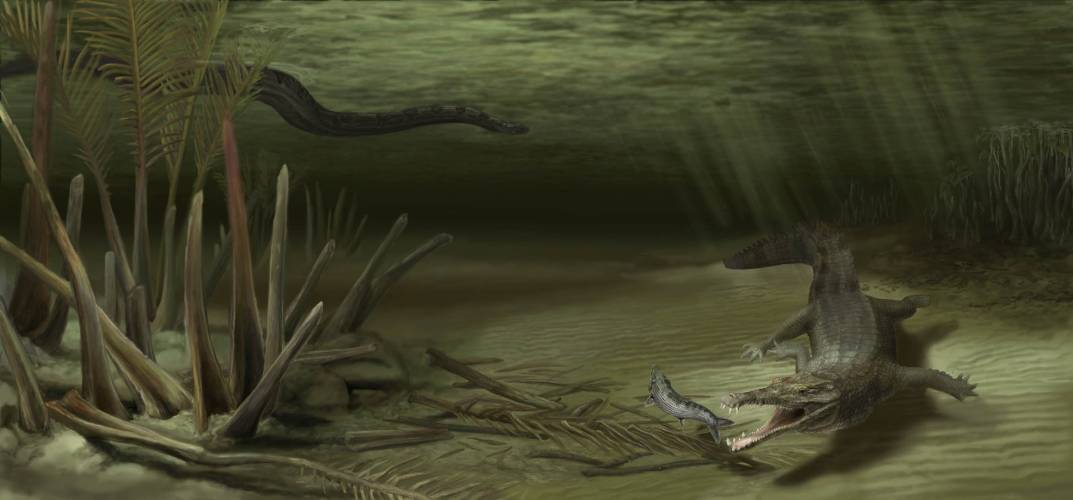Filtered by: Scitech
SciTech
Lolong's ancestors fought 40-ft snakes over food
By MARLON ANTHONY R. TONSON, GMA News
Sixty million years ago, crocodiles just about as large as Lolong, the 21-foot seawater crocodile captured in the marshlands of Agusan del Sur, had to battle it out with the world’s biggest snakes which grew 40 feet or even 50 feet in length. But the ancient battle of reptilian titans happened eons ago in what is now present-day Colombia in South America, not in the Philippines in Southeast Asia. In an article published in the journal Paleontology on Thursday (Friday in Manila), University of Florida researchers named the new 20-foot extinct crocodilian species as Acherontisuchus guajiraensis.

Florida Museum of Natural History illustration by Danielle Byerley depicting an A. guajiraensis, a 60-million-year-old ancestor of modern crocodiles, in the foreground and, above it in the background, the world’s largest snake, the Titanoboa.
Find out your candidates' profile
Find the latest news
Find out individual candidate platforms
Choose your candidates and print out your selection.
Voter Demographics
More Videos
Most Popular





